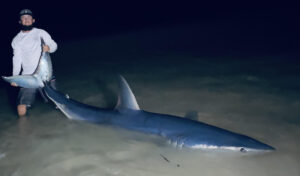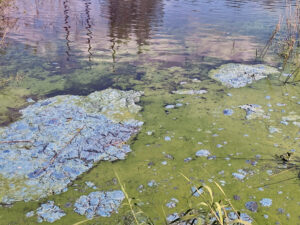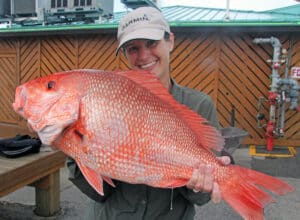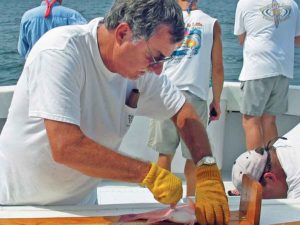Populations of opah — the magnificently colored, disc-shaped pelagic fish that can grow to weights of 150 pounds or more — appear to be growing or at least expanding their range into the eastern Pacific Ocean, the San Diego Union-Tribune has reported.
According to NOAA researcher Owyn Snodgrass, opah — also known as moonfish — are typically found in tropical and temperate oceans, and thousands have been caught in Hawaii by longline fishermen targeting bigeye tuna. Yet, off Southern California, the opah is a rare catch by sportfishermen.
This season, however, there have been more opah caught than many veteran offshore anglers can remember. “It’s the fish of a lifetime,” Snodgrass was quoted as saying in the U-T report. “It’s like winning the lottery. Nobody is expecting one of these. They are just doing something different to try to get a bite and they hook an opah.”
“My biggest dream is getting an opah underwater shot,” said Jon Schwartz, a marine photographer and schoolteacher who lives in northern San Diego County.
Snodgrass became curious about opah a few years ago, when they started popping up regularly on federal marine research trawls in the region, after being absent for the previous 10 or 15 years. Today, the fisheries lab has tags on four free-swimming opahs in hopes of learning more about their swimming and diving patterns (one tag already popped up near Hawaii, providing some clues).
Snodgrass and colleague Heidi Dewar are also dissecting the fish to learn what they eat and how they hunt their prey. With dissection, “there are no secrets,” Dewar told the U-T. “You can get a really good sense for how they live their lives by looking at their heart and their muscle and their stomachs.”
What little scientists know about opah suggests they are a highly migratory species that can quickly travel long distances. Research also shows opah dive hundreds of meters deep during the day, then come closer to the surface at night. Various opah species are found in the world’s oceans, and Snodgrass said they may live off California’s coast year round. Snodgrass is asking for help from anglers to learn more about opah caught off the coast of Southern California, particularly in collecting stomachs for inspection. He can be reached by email at owyn.snodgrass@noaa.gov.








